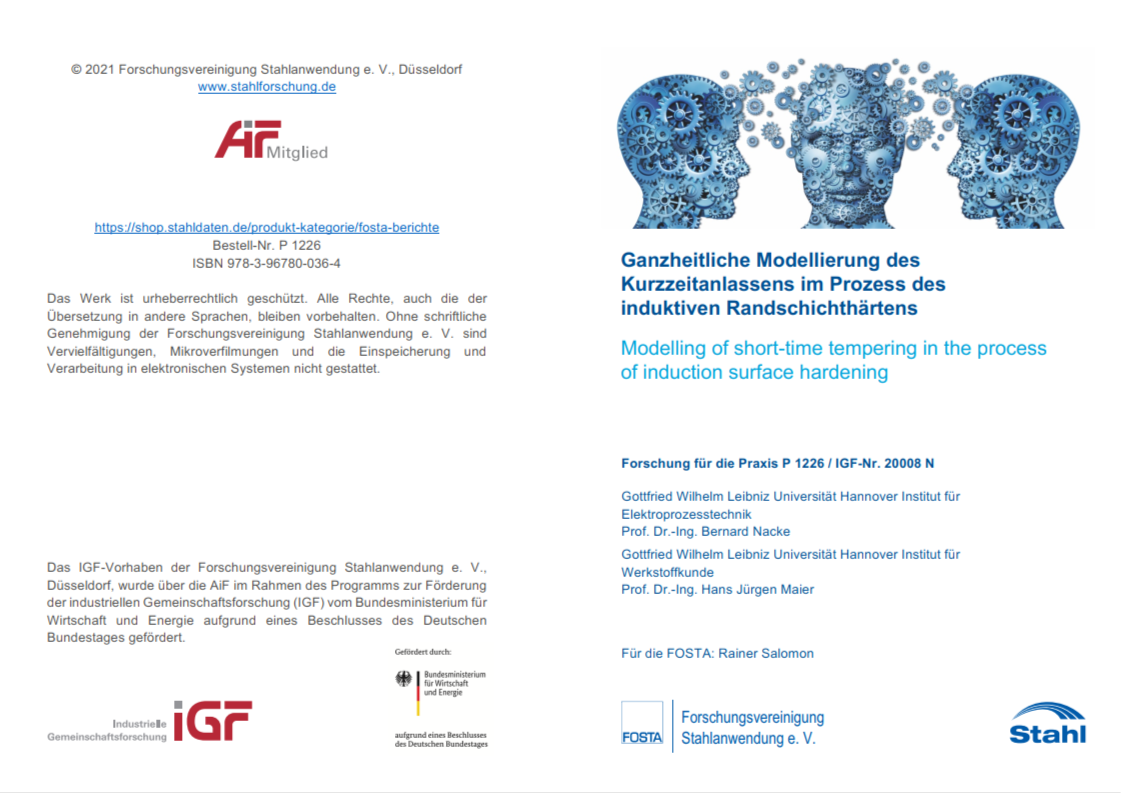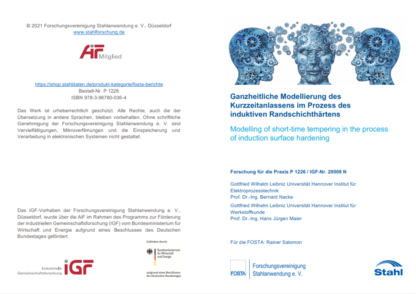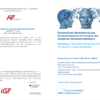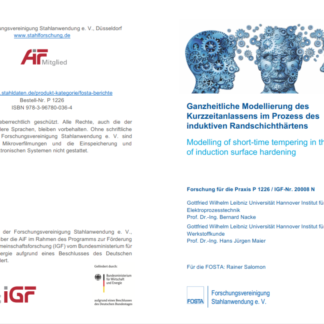Description
P 1226 – Modelling of short-time tempering in the process of induction surface hardening
Induction hardening is an energy-efficient method accompanied by undesired crack inducing residual stresses due to process-related thermal gradients between edge and core areas. In order to relieve the residual stresses furnace tempering for up to two hours is conventionally applied causing additional transportation and energy costs in the process chain. The induction tempering with a duration of several seconds represents a resource-efficient and environmentally friendly alternative that can be integrated in the continuous production line. Hence, the existing induction hardening process chain can become more flexible and ecological while maintaining product and process quality. The restraint of potential users regarding this method can be explained by the significant effort associated with the empirical determination of the induction tempering parameters. By means of a virtual process design, the experimental effort can be lowered significantly, increasing the attractiveness of this innovative technology. Existing models of the induction tempering are focused on the electromagnetic-thermal processes and on the final material hardness ignoring the prior hardening process. Thus, the complex coupled thermalmicrostructural aspects are neglected and consequently the model significance is strongly limited.
Based on this problem, this research project developed a holistic numerical model for induction tempering in the process chain of induction quenching that allows an efficient determination of optimal tempering parameters with moderate effort and a deeper understanding of the process. The model was implemented exemplarily in the commercial simulation software ANSYS and validated experimentally.
Published in:
2021
Authors:
Prof. Dr.-Ing. B. Nacke, Prof. Dr.-Ing. H. J. Maier




